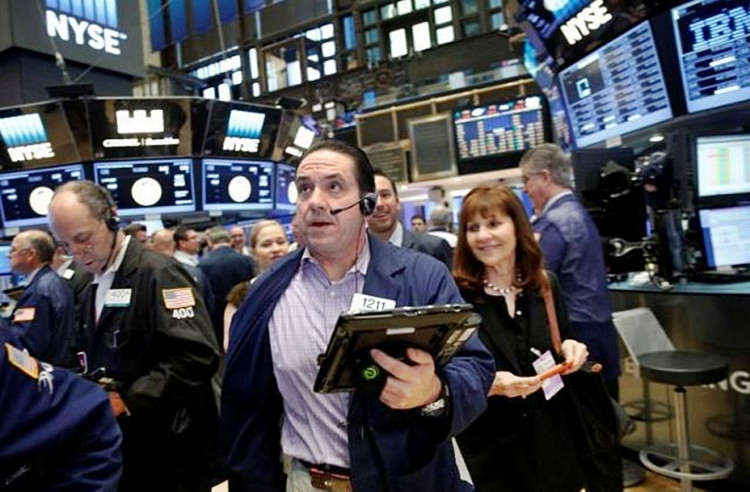Wall Street will post its worst October since the Great Recession of 2008 largely on negative investor sentiment ignited by Trump's trade war on the world; China's ongoing economic slowdown and rising U.S. interest rates savaging emerging markets.
Another clear-cut manifestation of the incredible volatility roiling U.S. equity markets emerged yesterday when the broader U.S. stock market dropped for the 12th time in the past 14 days led by the Dow Jones Industrial Average.
As measured by the Standard & Poor's 500 indexes, the market has turned uncharacteristically volatile since hitting a record high Sept. 20 despite positive earnings reports from most publicly traded firms.
Market analysts say Trump's trade war is increasingly unnerving already anxious investors. Their chief worry now is the turmoil that will result from the full implementation of the new 25% tariff on Chinese imports to be implemented on January 1, 2019.
Investor psychology has turned more cautious amid a widening array of risks that might end the 9-year-old bull market in the U.S. Those risks now include worries about corporate earnings after two industrial biggies, Caterpillar, Inc. and 3M, issued outlooks that spooked investors and led to Tuesday's rout
The Dow plunged more than 500 points in early trading Tuesday, re-igniting memories of the 800 point debacle two weeks ago. U.S. stocks slumped broadly yesterday,
The latest wave of selling extended the market'ss string of losses as investors become increasingly demoralized by the bleaker prospects for China's economy. The cost of President Donald Trump's unwarranted trade war that's so far produced only losers on both sides is also a cause for investor anxiety.
Stocks slid earlier in the day after the release of disappointing financial results from major manufacturers, including Caterpillar and 3M. The Dow gave-up as many as 548.62 points. Technology companies, banks, and industrial stocks led the market slide, which followed a steep sell-off in Chinese and other global markets.
At the end of the trading day, the Dow lost 0.5% or 125.98 points. The S&P 500 fell 0.55%, or 15.19 points, ending trading lower for 12 out of the past 14 sessions. The NASDAQ tumbled 0.42% or 31.09 points.
Analysts said the exact reasons for the slide yesterday were as baffling as those that caused the rout two weeks ago. Surprisingly, firms that beat earnings expectations have underperformed the S&P 500 by about 40 basis points despite an above-average beat level.
Some analysts believe this might be due, in part, to disappointing guidance. They noted many companies that beat on the top or bottom lines in the third quarter have either slashed or failed to raise future forecasts.
Other analysts say the recent falls in the equity markets has led to a mass of conspiracy theories about the reasons for the declines. What's clear is the cause or causes aren't earnings or forward-looking indicators but tighter financial conditions. The combination of a strong dollar and rising U.S. bond yields remain headwinds to share prices.
Yesterday's disappointing trading continues the unusual volatility that's been plaguing October. The S&P 500 is down 6.77% from its October 3 intraday high of 2939.86 points.
Bond prices rose, sending the yield on the 10-year Treasury note down to 3.13 percent from 3.19 percent late Monday.
It was the same bloodletting elsewhere in the world. Hong Kong's Hang Seng index fell 3.1 percent and European markets traded lower.
Germany's DAX skidded 2% while France's CAC 40 lost 1.4%. Britain's FTSE 100 fell 0.9%. In Asia, Japan's Nikkei 225 index gave up 2.7% and the KOSPI in South Korea tumbled 2.6%. Australia's S&P-ASX 200 dipped 1.1%.






